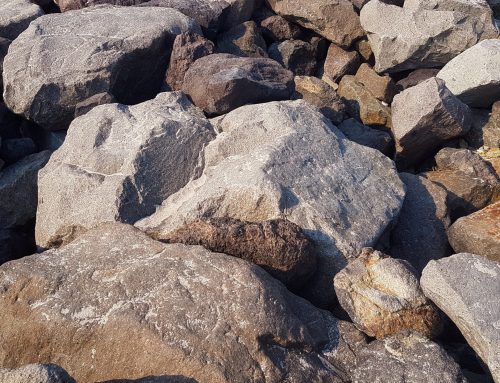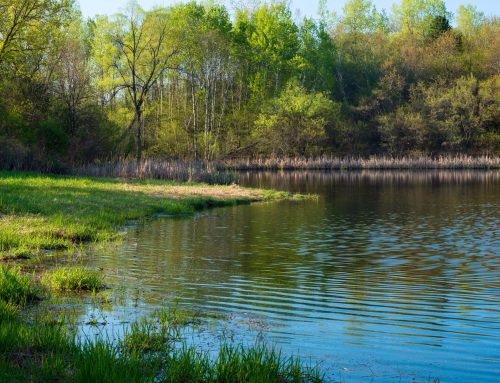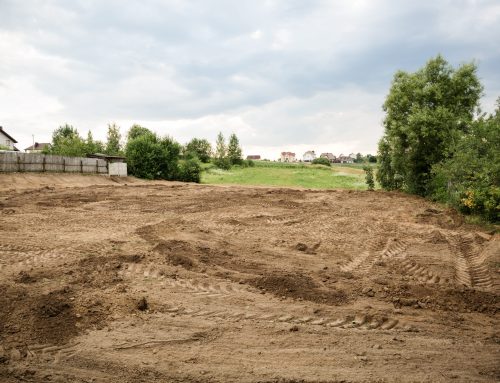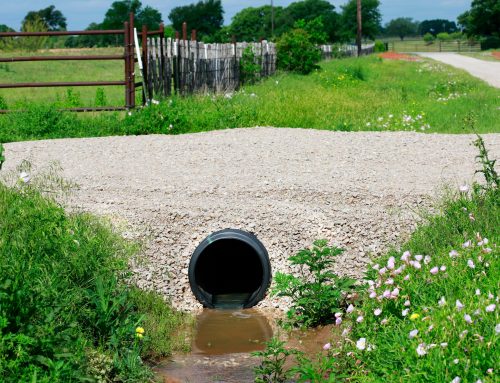Land leveling contractors you can trust for better access and drainage. Discover farm and field leveling concepts, get a custom plan and a free quote today, and call now. In this guide, you will learn how proper grading creates solid access routes, moves water where it should go, protects your soil, and sets up your farm for long term success. If you are comparing land leveling contractors in Wisconsin, RLP Diversified, Inc offers the experience, equipment, and service you need.
What Is Farm and Field Leveling
Farm and field leveling is the process of reshaping the ground surface to create safe access and reliable drainage. The work may be light touch, like smoothing ruts and adding a gentle cross slope, or it may be more involved, like cutting high spots, filling low spots, shaping drainage swales, and stabilizing waterways. Skilled land leveling contractors balance soil volumes, protect topsoil, and set precise grades so fields drain evenly and are easy to farm.
- Set consistent slopes that move water off fields in a controlled way
- Build dependable field entrances, lanes, and turnouts for heavy equipment
- Reduce ponding, ruts, and compaction that slow down operations
- Protect topsoil and seedbeds from erosion and sediment loss
- Integrate surface and subsurface drainage for year round reliability
Why Proper Leveling Matters for Access and Drainage
Better Machinery Access Year Round
When a field is smooth and graded, you can reach every acre sooner after rain and snowmelt. Consistent surfaces reduce jolts and rutting, which protects bearings, tires, and frames. A stable lane or farm road cuts downtime and keeps trucks and carts moving during harvest. Well built entrances and turnarounds also prevent traffic from tearing up headlands.
Controlled Drainage and Soil Protection
Thoughtful grading sends water into designated waterways and culverts instead of across the field. This reduces sheet erosion, soil crusting, and sediment entering ditches and ponds. Good drainage also limits standing water that can drown roots, delay germination, and invite disease.
Higher Yields and Fewer Delays
Uniform slopes help create even seed depth and consistent moisture. You plant sooner in spring and return to the field sooner after storms. That means fewer skipped passes, better emergence, and more acres covered each day at planting and harvest. Over time, the gains add up to stronger yields and lower per acre costs.
Safety and Road Access
Safe access matters for every farm. Properly crowned lanes, well positioned culverts, and compacted stone bases reduce washouts and soft spots. Clear sight lines and strong shoulders reduce risk for operators and trucks. These details protect people, equipment, and schedules.
Core Concepts Land Leveling Contractors Use
Survey and Design
Successful leveling starts with good data. Land leveling contractors use grade lasers, GPS rovers, and sometimes drone mapping to understand the current surface and where water moves. Design plans show cut and fill areas, slope percentages, drainage paths, and material staging. With a clear plan, you avoid surprises and control costs.
- Topographic mapping to capture elevations and flow paths
- Soil review to understand structure, moisture, and compaction
- Drainage analysis to size swales, culverts, and waterways
- Access planning to set lane routes, turnouts, and field entrances
Cut and Fill Balance
The best projects balance cuts and fills to limit hauling and protect the budget. Contractors strip and stockpile topsoil before moving subgrade. After shaping the subgrade, they return topsoil to preserve fertility. Balancing material on site saves trucking time and reduces environmental impacts.
Grade Controls and Slope Targets
Good surface drainage needs consistent grades. Many row crop fields perform well with slopes in the range of 0.2 to 0.5 percent. Lanes and farm roads often need a crown of 2 to 4 percent with positive ditches to keep the driving surface dry. Steeper slopes may be needed for short distances, but the overall plan should keep water moving without causing erosion.
Surface and Subsurface Drainage
Leveling often pairs with drainage features. Surface options include shallow swales, grassed waterways, cross slopes, and diversion berms. Subsurface options may include tile lines, inlets, and stable outlets. Many farms use both, since surface grading removes water fast and subsurface tile manages the water table for root health.
Access Infrastructure
A great field is only useful if you can reach it, even in wet seasons. Well built farm lanes with a compacted base, geotextile fabric where needed, and the right stone gradation hold up under heavy loads. Properly sized culverts and headwalls keep water flowing and protect crossings. RLP Diversified, Inc supports access projects with aggregate delivery and precise grading so your routes last.
Erosion and Sediment Control
During construction, silt fence, wattles, and check dams help keep soil in place. After grading, seeding bare areas and establishing grassed waterways protect the surface. Rock at inlets and outlets reduces scour. The goal is simple, to stabilize quickly and keep clean water moving where it should go.
The RLP Diversified, Inc Approach
RLP Diversified, Inc is a Burlington, Wisconsin contractor with a strong record in grading and excavating. The company started in 2000 and grew in 2013 with the integration of Andy’s Excavating. Today, RLP Diversified, Inc serves farms and landowners across Wisconsin, including Milwaukee, Waukesha, Madison, Racine, Mequon, Kenosha, and Green Bay. As land leveling contractors, the team brings practical field experience, proven methods, and reliable equipment to every project.
- Aggregate and Trucking, delivery of topsoil, fill dirt, sand, stone, gravel, and limestone for roads, lanes, driveways, and general construction
- Grading and Earthmoving, rough and finish grading for roads, highways, developments, and agricultural sites, including topsoil stripping, backfilling, spreading, and seeding
- Pond Excavating, pond building and maintenance, shoreline protection, removal of old seawalls, and installation of stabilization measures
- Excavating, full service digging, dredging, scraping, and demolition for foundations, parking lots, shorelines, and irrigation ponds
- Demolition, building and concrete demolition with site cleanup and concrete recycling for driveways, foundations, parking lots, and roads
RLP Diversified, Inc operates a modern fleet from brands like Caterpillar, Bobcat, and New Holland. The right machines, combined with a skilled crew, allow efficient, safe, and precise work.
Step by Step Leveling Process With RLP Diversified, Inc
- Discovery call, discuss goals for access and drainage, review timing, and note special concerns
- Site visit and assessment, walk the site, check soils, identify wet spots, evaluate access, and measure grades
- Topographic survey, collect elevation data using GPS or laser tools to plan cuts, fills, and drainage features
- Custom design and quote, provide a clear plan with scope, timeline, and a free quote so you can budget with confidence
- Permits and coordination, assist with any needed permits and coordinate with utility locators where required
- Mobilization and protection, set up access, mark limits, install temporary erosion controls, and protect sensitive areas
- Topsoil management, strip and stockpile topsoil for reuse to protect fertility
- Rough grading, balance cuts and fills to meet design slopes with efficient earthmoving
- Drainage work, construct swales, install culverts, shape waterways, or coordinate subsurface drainage as planned
- Lane and entrance construction, build road base, compact in lifts, and shape crowns and ditches for long life
- Finish grading, refine slopes, return topsoil, and prepare seedbeds
- Stabilization, seed disturbed areas, place erosion control blankets or mulch as needed, and install rock at inlets or outlets
- Quality checks, verify grades, flow paths, compaction, and surface smoothness
- Cleanup and turnover, remove temporary controls when appropriate, clean up the site, and review the work with you
- Follow up, check performance after the first heavy rain and suggest any fine tuning
Smart Design Details for Better Access and Drainage
- Cross slope, target a gentle 0.2 to 0.5 percent slope for most field surfaces to move water without erosion
- Headland strategy, consider extra grading at headlands to reduce rutting from frequent turns
- Field entrances, widen and reinforce entries with compacted aggregate and geotextile where soils are soft
- Crowns and ditches, for lanes, use a 2 to 4 percent crown with positive ditches to shed water away from the driving surface
- Turnouts and aprons, add compacted aprons at bin sites and loading areas to handle heavy traffic
- Culvert planning, set culvert invert elevations to maintain grade, place end sections, and protect with riprap
- Topsoil stewardship, strip, stockpile, and respread topsoil to maintain fertility and avoid mixing soil horizons
- Compaction control, avoid over compaction in root zones, rip subgrade where needed, then compact lanes and pads to design specs
- Waterways, seed with dense grass and protect early growth with erosion control blankets on steeper grades
- Ponds and basins, use ponds or sediment basins where needed to slow water and capture sediment before it reaches streams
- Shoreline stabilization, protect pond edges with stone or other stabilization to stop erosion
- Winter and freeze thaw, in Wisconsin, schedule heavy earthwork during stable weather when possible, and plan for spring thaw runoff
- NRCS alignment, follow accepted standards for waterways, diversions, and outlet protection to meet conservation goals
How to Prepare Your Farm for a Leveling Project
- Mark property lines, utilities, and sensitive areas before work begins
- Share recent yield maps and wet spot notes to guide design choices
- Plan access routes for trucks and equipment to avoid soft soils
- Clear debris, stumps, and old fence where grading will occur
- Time the work after harvest or during drier periods when possible
- Decide how you want to handle topsoil stockpiles and future seeding
- Coordinate with neighbors if drainage crosses property lines
- Set a communication plan for daily updates and decisions
Costs, Timelines, and ROI
Project cost depends on several factors, including soil type, cut and fill volumes, stumps or debris removal, hauling distance, drainage features, stone needs, and site access. Fields that allow balanced cut and fill and have good access generally cost less. Adding lanes, culverts, or pond work adds value and can extend the schedule. Most farm leveling projects range from a few days to several weeks depending on size and complexity.
The return on investment comes from earlier field access, fewer stuck machines, reduced fuel use, less equipment wear, better stand establishment, and less time spent on repairs. Many farms also see long term gains from lower erosion and better soil structure. A careful plan and an experienced crew help you get the best value for each dollar spent.
- Reduce trucking by balancing material on site whenever possible
- Use suitable on site soils for fills and reserve premium stone for critical areas
- Bundle projects like lane building and field grading to save mobilization costs
- Schedule during stable weather to improve productivity and compaction results
- Invest in correct drainage features up front to avoid costly rework
Choosing the Right Land Leveling Contractors in Wisconsin
Not all land leveling contractors bring the same mix of skills, equipment, and planning. Look for a team with a track record in agricultural grading, safe work practices, and strong references. They should provide clear designs, realistic schedules, and full cost transparency. Insurance, safety training, and a reliable equipment fleet also matter.
RLP Diversified, Inc stands out with more than two decades of grading and excavating experience in Wisconsin. The company’s integration of Andy’s Excavating in 2013 expanded both capacity and expertise. With access to Caterpillar, Bobcat, and New Holland equipment, RLP Diversified, Inc brings the right tools to every phase of your project. From aggregate delivery to finish grading and stabilization, the team delivers a complete solution. If you want land leveling contractors who understand farm operations and local conditions, this crew is a strong choice.
Frequently Asked Questions
- What is the difference between laser grading and GPS grading, both set precise grades. Laser works well on smaller or flatter areas, while GPS shines on larger or complex sites with variable slopes.
- When is the best time to level fields, many farms choose post harvest or late summer when soils are drier. Winter work is possible for certain tasks if access and frost allow.
- How much slope do I need for surface drainage, many fields perform well with 0.2 to 0.5 percent. The exact target depends on soils, crop, and erosion risk.
- Will leveling harm my topsoil, it should not. Skilled contractors strip, stockpile, and respread topsoil over shaped subgrade. This protects fertility and structure.
- Can you add farm lanes and culverts during the same project, yes. Combining access and drainage work often saves time and money.
- Do you handle permitting and utility locates, RLP Diversified, Inc can help coordinate with local agencies and utility locators as part of the planning process.
- Do you offer free quotes, yes. RLP Diversified, Inc provides custom plans and free quotes after a site review.
- What areas do you serve, the team serves the entire state of Wisconsin, including Milwaukee, Waukesha, Madison, Racine, Mequon, Kenosha, and Green Bay.
Get a Custom Plan and Free Quote
Your farm deserves safe access, predictable drainage, and a surface that supports productivity. Choose experienced land leveling contractors who understand Wisconsin soils and weather. RLP Diversified, Inc is ready to review your site, design a practical solution, and deliver quality results. From aggregate delivery to final seeding, the team handles the details so you can focus on farming.
Reach out to RLP Diversified, Inc to schedule a site visit and get a free quote. Ask about grading for fields and lanes, culverts and waterways, pond excavation, and shoreline stabilization. The company serves farms across Wisconsin and brings reliable equipment from brands like Caterpillar, Bobcat, and New Holland to every job. Call now to discuss your goals and get a plan that improves access and drainage for the long term.






Leave A Comment